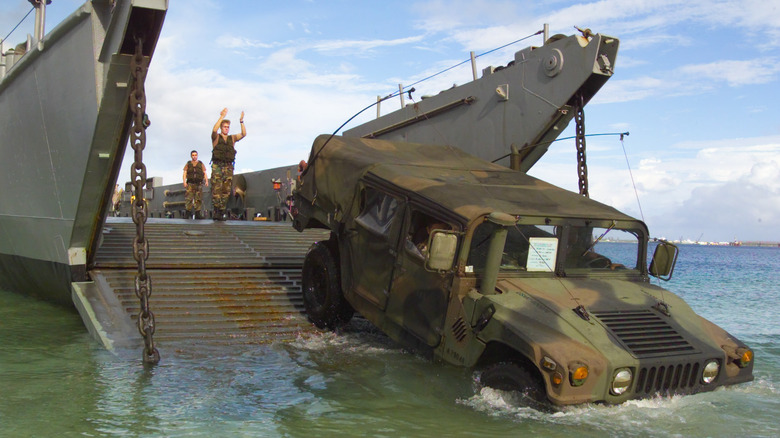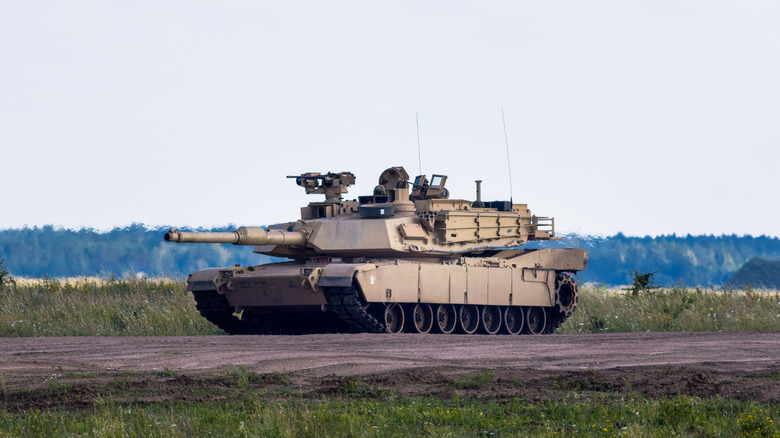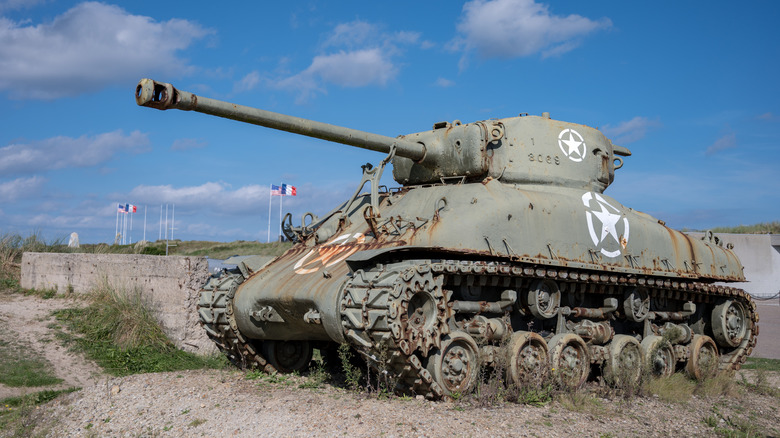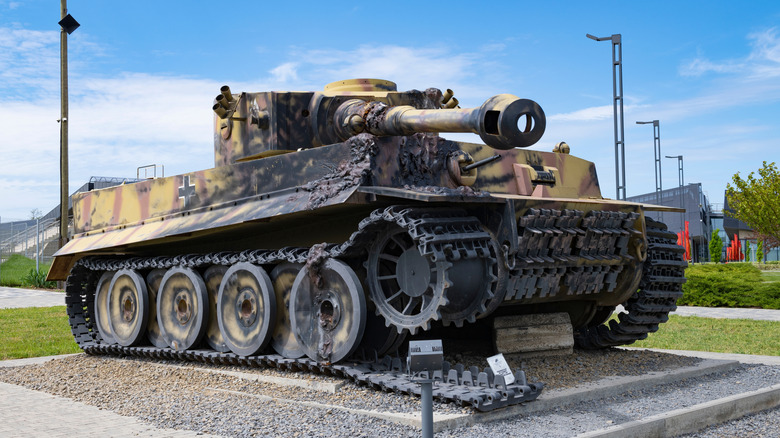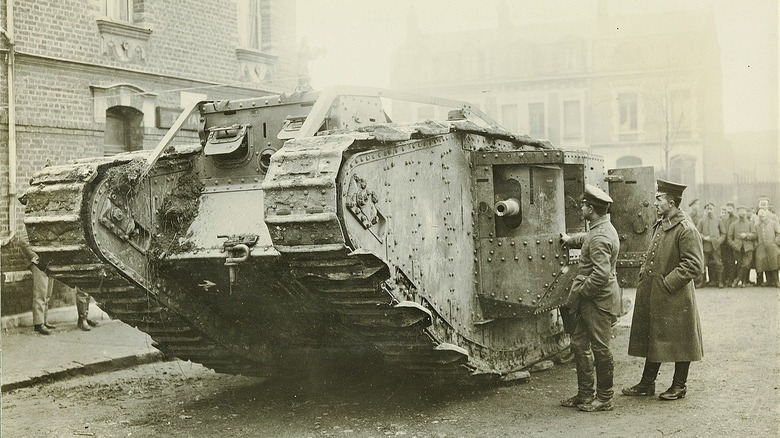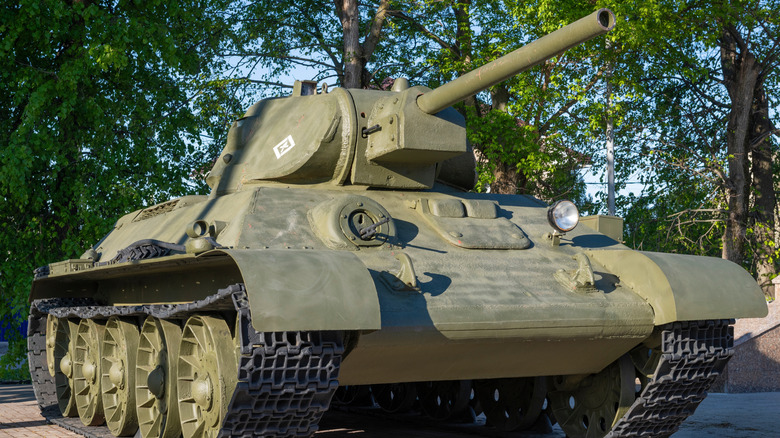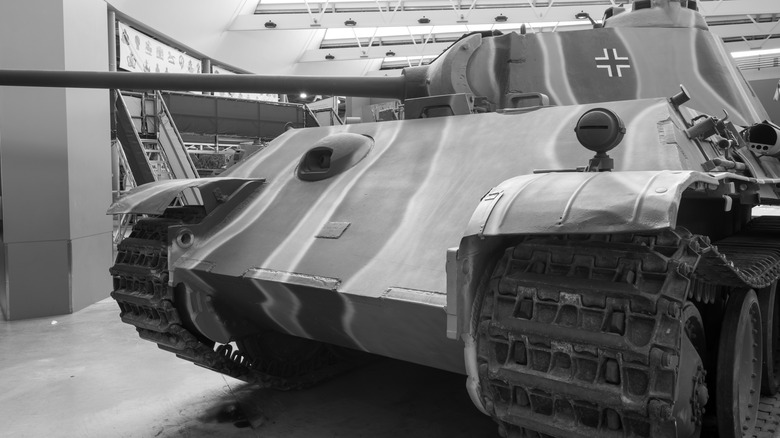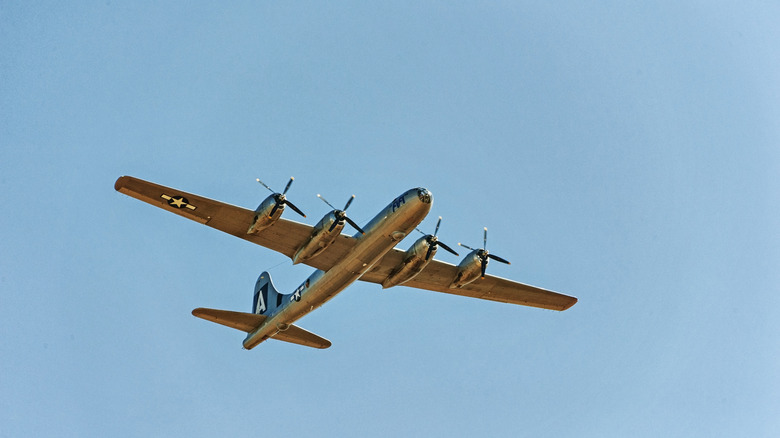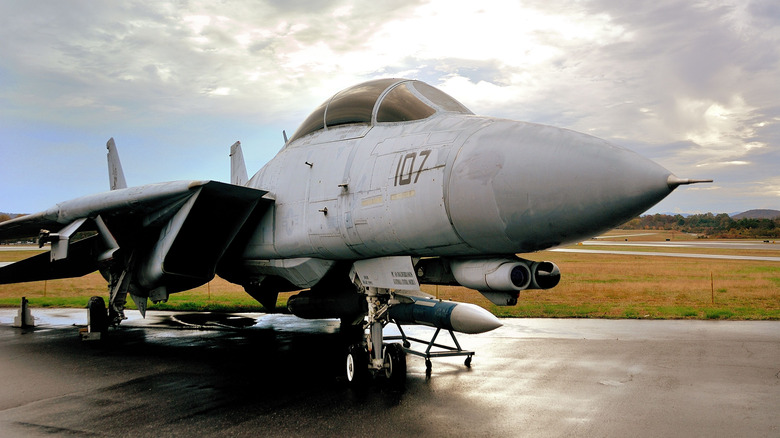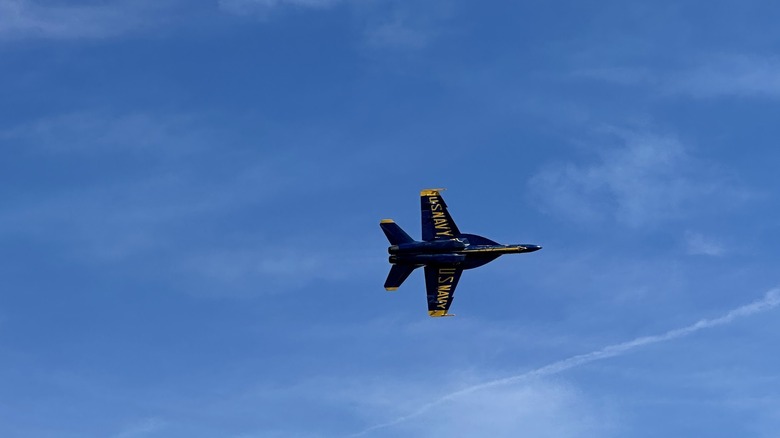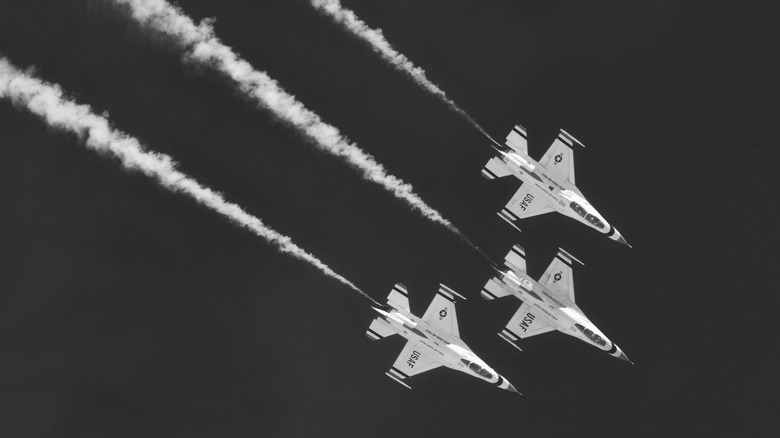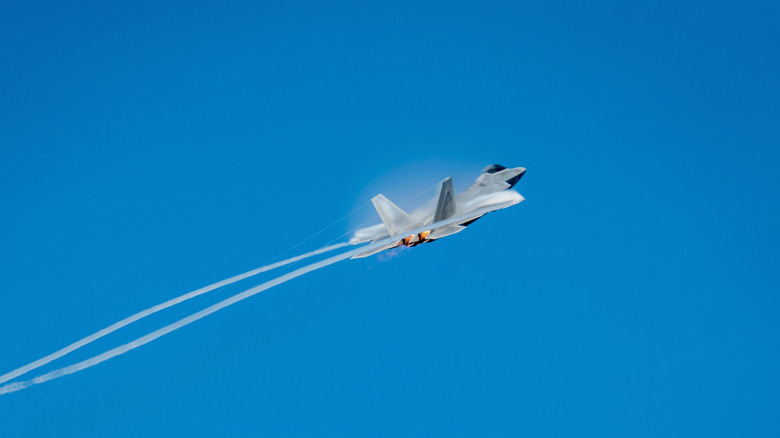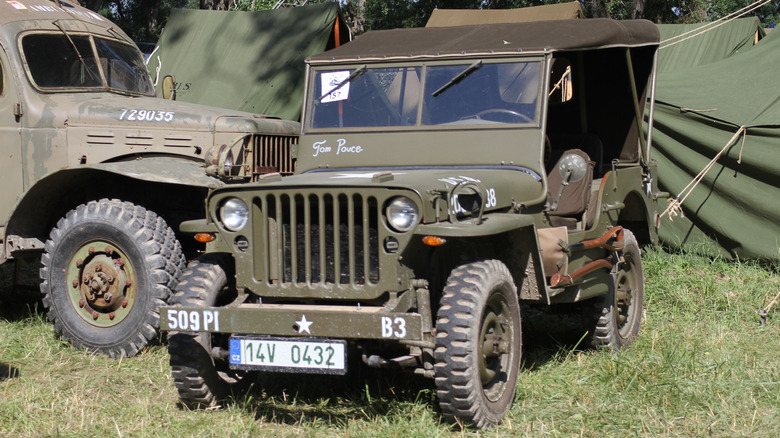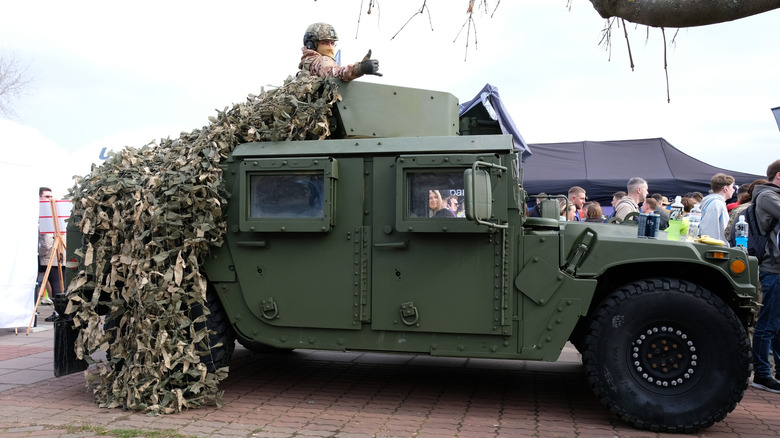13 Of The Most Famous Military Vehicles In History
As controversial as war is, countries all over the planet dedicate massive resources to developing military materiel and padding their defenses. A handful of countries have developed weapons and vehicles that then spread across the globe. Thus, a list of all the military vehicles in history would be far too long to publish. However, some are well-known and immediately recognizable to the average person.
That's not to say these vehicles are ordinary. Some of the most famous military vehicles have changed the course of history. From their onboard weapons to their speed to the missions they have completed, each military vehicle has a unique claim to fame. What they all have in common is that the average person can recognize them, which speaks volumes to just how pervasive they are as military icons.
However you feel about war, the innovation brought about by conflict is nothing to scoff at. Whether it's a famous plane that worked its way into an action movie or a vehicle that now drives on civilian streets around the world, these are no small feats of engineering. From tanks to planes to fighter jets and land vehicles, these are some of the most famous military vehicles in history.
M1 Abrams
When you picture an American military tank, it's probably the M1 Abrams that first comes to mind. It's one of the largest military tanks in history at 55 tons, mostly thanks to the added heft of its Chobham armor—but that's not the only reason it's famous. The M1 Abrams features technology that was advanced when it was first developed, with a stabilized gun and more protection for its crew than earlier tanks.
Possibly one of the best tanks ever made, per its technical specs, the M1 Abrams also didn't wind up in the shop too often, according to historical records. The tank had a reliable engine and was lightweight, and it was able to accept different types of fuel. It had composite armor with steel and ceramic tiles, could travel 300 miles on a tank of fuel, and could accommodate a crew of four.
Innovation didn't stop with the original M1, though; the M1A2 improved upon the first design. Advanced armor and firepower meant a heavier weight, with the M1A2 clocking in at about 68 tons, but that didn't stop the tank from outmaneuvering its contemporaries. Of course, there are fewer M1A2s out in the world today, as the first production run was also its last, after 627 tanks rolled off the assembly line. In contrast, around 2,000 M1s were built in the 1980s, and many are still employed by the military today.
M4 Sherman
Rewinding through history, another iconic U.S. military tank is the M4 Sherman. While the M4 Sherman didn't make it all the way through WWII with zero competitors, it was the most commonly used tank in the war. While the 50,000 produced during the war were largely used by the U.S., allies also used the design. The tank had a strong run during the conflict, but it did develop a reputation for its flammability; Sherman tanks easily caught fire. Its penchant for going up in flames might make the Sherman a less-than-perfect example of military prowess, but either way, it's quite famous for both its successes and failures.
For one thing, Shermans are said to have been easy to fix while on the battlefield, even though German vehicles were able to inflict plenty of damage. Despite its shortcomings, the M4 Sherman may still be one of the best American tanks ever built thanks to the ease of repair and how affordable they were to build. Not only that, but thousands of Shermans were built by Ford Motor Company, giving the tank even more visibility and notoriety thanks to Ford's fame. Of course, it being famous didn't mean it always won in scuffles against other famous tanks, like the Tiger or Panther.
Tiger I
An iconic tank that outclassed the M4 Sherman was the German Tiger, which is said to be the most famous tank of World War II. For American troops and their allies, the Tiger I was bad news, but that's what made it a noteworthy mention in the history books. The Tiger I is easily classed as one of the most legendary tanks of World War II given its firepower and strong defenses. The Tiger has 100 mm thick armor.
Of course, the Tiger I wasn't infallible. Despite its evolution from inception and through all its improvements, and perhaps to the benefit of the allies, the tank still had some weaknesses. Like the Sherman, it also caught fire easily and was said to be unreliable. In fact, in what is perhaps a testament to its fallibility, there is only one remaining operable Tiger I tank in the world, and it's housed at the Tank Museum in the U.K.
Of course, the fact that only 1,354 were produced could also explain why so few remain today. Even though it may not have been the most impressively engineered tank in history, the Tiger still enjoys some fame today as a recognizable name among military vehicles.
Mark IV
In another dive back into history, the British Mark IV was one famous tank to come out of World War I. It was the most prolific of WWI, with 1,222 produced throughout the course of the conflict. The relatively lightweight tank (it clocked in at 28 tons) has a unique look that makes it instantly recognizable among other tanks—that is, if you can find one to look at. Only six Mark IVs remain in the world today, and three of them are on display at the Tank Museum in the U.K.
In the Mark IV's heyday, however, the tank was the first to be adopted and produced on a large scale. Keeping in mind that this was WWI, the tank was impressive for its era, although its specs aren't much to write home about today.
The Mark IV had a maximum speed of 3.7 mph, and its armor was only .47 inches—or about 12 mm—thick. While it could accommodate a crew of eight, the 28-ton tank was not as cozy nor as safe as crews might have hoped. Not only was it noisy, smelly, and hot inside, but the Mark IV also had a gun that couldn't be used unless the tank was stationary.
T-34
During WWII, the Soviet T-34 tank rose to fame in battles against the German military. It's said that the T-34 inspired fear, mostly because of the 76.2 mm gun the tank was equipped with. Not only did the T-34 have sufficient armor to ward off most anti-tank weapons, but its gun had better specs than any comparable tank of that time. Back then, the T-34 was highly acclaimed, which explains why it's still famous today despite some failures on the battlefield.
Of course, some aspects of the T-34 were history-changing. For one thing, the tank had sloped armor, a modification that went on to influence tank design for years. Sloped armor provides more defense against anti-tank weapons because it increases the amount of material that the ammunition has to penetrate. Adding sloped armor offers more protection to the tank (and its occupants) without adding thicker armor and, thus, weight.
The T-34 was also iconic for other reasons, including the fact that it spawned the most-produced tank in history, the T-54/55 series. Not only is the T-54/55 said to be prolific, but a long list of countries have adopted the modern design since it first came out in 1983.
Panzer V Panther
Experts may not be able to decide whether they love or hate Germany's Panther V, but it's still one for the history books. Given that the production of the Panther was rushed, it wasn't perfect, but there was still plenty of innovation on board when the prototype rolled out.
The Panther was able to dominate the M4 Sherman in conflicts, and it had strong defenses as well as firepower. The Panther utilized sloped armor—an improvement over the Tiger I—and it had a massive anti-tank gun. Of course, the Panther wasn't an immediate success; its design was developed after Germany ran into the Soviet T-34 and KV-1 tanks. Still, the Panther was more agile than the Tiger and had comparable firepower, and could accommodate five crew members.
The Panther wasn't the most prolific tank, but with around 6,000 built between 1942 and 1945, it's definitely up there when compared to other militaries' tank stocks. Various versions of the Panther were produced, with some versions easier to identify than others. Regardless, the Panther is a well-recognized tank and considered an impressive contribution to military history.
Boeing B-29 Superfortress
The Boeing B-29 Superfortress could be considered one of the most legendary planes of WWII purely because it was the plane that dropped the Fat Man atomic bomb on Nagasaki. That specific B-29 is still on display at the National Museum of the United States Air Force; Bockscar was specially modified for the atomic bomb job. A B-29 might not look like a super impressive plane, especially when compared to fighter planes, for example, so it's more the history that makes it famous.
That's not to say the Superfortress' specs are not impressive, however. The huge plane has a maximum speed of 357 miles per hour and a range of 3,700 miles. While the first B-29 originally flew in 1942 and garnered plenty of attention, production ended after WWII. Only 3,970 B-29s were manufactured, with many going straight from the assembly line to storage, and the last one ended its service in 1960.
That doesn't mean you can't spot a B-29 in the wild, though. Many museums have them on display, but only two specific planes named Fifi and Doc still fly. Expensive today, one B-29 Superfortress could buy you 450 brand-new Ford Focuses, according to the New England Air Museum.
F-14 Tomcat
The F-14 Tomcat likely needs no introduction, as it's easily recognizable as the plane from "Top Gun." However, the impressively powered Tomcat has a complicated and interesting history. Designed in the 1960s and rolling off the production line and delivered in 1972, the F-14 was a U.S. Navy jet with the specific task of defending aircraft carriers.
These jets could travel faster than Mach 2 at high altitudes, and its tracking capabilities allowed it to spot enemies up to 195 miles away. A variety of missiles (from short- to long-range), bombs, and cannons helped the Tomcat in all types of missions, from long-range defense to dogfights.
Its appearance in the 1986 film "Top Gun" easily made the Tomcat one of the most famous warplanes in history. Of course, the Tomcat has made the news for other reasons. For one thing, about 80 F-14s wound up in Iran after a pre-revolution deal. While the U.S. military used Tomcats in Iraq and Afghanistan conflicts, Iran still has functioning F-14s today. However, the U.S. Navy has since retired the F-14 Tomcat and even destroyed its stock beginning in 2006 in an attempt to ensure that spare parts wouldn't somehow make it to Iran.
F/A-18 Super Hornet
Not only is the F/A-18 the jet of choice for the U.S. Navy's demonstration team, the Blue Angels, since 1986, but the aircraft is also used by militaries all over the globe. According to Boeing, which manufactures the jet, customers include Australia, Kuwait, and the U.S. Other countries, including Canada, Finland, Malaysia, Spain, and Switzerland, also own Hornet and Super Hornet jets.
While the F/A-18 Super Hornet has had multiple iterations (Boeing cites the Block III as the newest rollout), the F/A-18 is a staple in the U.S. Navy's carrier air wing. The Super Hornet replaced the F-14 Tomcat when it entered service in 1999 (previous models were F/A-18 Hornets), and the Super Hornet comes in both single seat and two-seat models.
The Super Hornet is capable of completing a range of missions, from day and night strikes to fighter escort, maritime strike, reconnaissance, and more. It can reach airspeeds of over Mach 1.8, and costs about $67.4 million per jet. Though it's famous mostly because of its storied history with the U.S. Navy, the F/A-18's styling is also iconic and recognizable, even if the Super Hornet's nose cone did give it a funny nickname.
F-16 Fighting Falcon
Another famous jet that appears in demonstrations across the U.S., from airshows to football games, is the F-16 Fighting Falcon. The U.S. Air Force's demo team, for example, flies F-16C Fighting Falcons, and smaller teams and individual aircraft perform flyovers at football games all over the country. It's not just fun and games with the Fighting Falcon, though. The aircraft is recognizable and something of an icon, thanks to its visibility at civilian events, but the F-16 is famous for other reasons.
For example, the F-16 has recently been piloted by AI, with the AI-flown jet beating a crewed plane 5-0 in a notable achievement in military history. The potential to enlist AI-powered jets in the military could save money and even lives, making the Fighting Falcon's resume even more impressive.
As far as their fame, F-16 Fighting Falcons have a broad reach; they are manufactured all around the world with Lockheed Martin. There are around 2,600 in-service F-16s in 12 countries. Today's F-16 is the fourth generation (Block 70/72) and while it's still recognizable in styling, it comes with better technology—including digital map displays—and the potential for even more improvements.
F-22 Raptor
Anyone who has watched a "Transformers" movie will recognize the F-22 Raptor, but that's only part of why it's so famous. The F-22 Raptor is Starscream's alt mode in the Bayverse films — one of the Transformers to have a real-life vehicle as its alt mode. In the original cartoon, Starscream was a Cybertronian jet, and he's also been an F-15 in the books, but the F-22 is probably his most recognizable (and modern) form.
It's not only the Transformers franchise that made the F-22 Raptor a household name, however. The jet also made an appearance in Marvel films like "Iron Man," "Iron Man 2," and "Captain Marvel." It's also appeared in many other shows and films outside the MCU.
Beyond its film fame, the F-22 Raptor is also the stealthiest fighter jet ever built, so far. Since 1997, Lockheed Martin has produced the F-22 Raptor, and the jet is now in its fifth generation. According to the manufacturer, the Raptor is the "best air dominance fighter in the world," due to how fast, agile, and stealthy it is. Similarly, the Air Force states that the F-22 is currently unmatched when it comes to "known or projected" fighter aircraft, so it has quite the reputation around the world.
Willys Jeep
Whether you watch old war movies or shows with flashbacks of war from decades past, you're likely to have spotted a Willys Jeep at some point. The original Jeep came out in 1940, when the U.S. Army began looking for a reconnaissance vehicle with particular specifications. Beating out its competitors, Ford and Bantam, Willys-Overland began working on its military vehicle.
Over a few iterations, it lowered the weight to Army specifications and eventually released the Willys MA and, shortly thereafter, the MB. Although 16,000 MBs were produced, the original MA is one of the rarest Jeeps out there today; per Jeep, only about 30 models are left.
Part of why the Willys Jeep is so famous is that military personnel reportedly bonded with their vehicles. One Willys MB even received a Purple Heart award and was shipped back home. Willys Jeeps were known for being hardy vehicles that could handle any conditions and heavier loads than they were rated for. They were small enough to fit in aircraft and could survive conditions ranging from desert heat to feet of snow—earning them a reputation and notoriety that lasted longer than the original models have.
Humvee
Jeep may have been famous first, but the Humvee eventually took Jeep's place in the military and is one of the most iconic military vehicles in history to date. While some Jeeps were considered unstable due to rollover risk, the HMMWV was seven feet wide and far beefier. Colloquially called Humvees, the HMMWV aimed to go off-road where other vehicles couldn't, and it had a very high ground clearance to accomplish that feat.
Not only are Humvees durable and rugged, they're also modifiable for different applications. It might be the Humvee's versatility that made it sought-after in every branch of the U.S. military. Even among the 15 different configurations (Humvees can serve as ambulances, weapons carriers, cargo and troop carriers, and more), the parts were all the same, so the vehicles were easy to repair.
Humvees were prolific in the Gulf War, which led to the civilian adaptation of the Hummer. One story goes that Arnold Schwarzenegger wanted a Hummer after seeing one on a film set in the early '90s, then pressured GM to sell him one. After that, the Hummer saw some time in the spotlight (and on the market) until 2010. The recession was blamed for the Hummer falling out of favor, but eventually, GMC came back on the market with a Hummer—only this time, it's all-electric.
